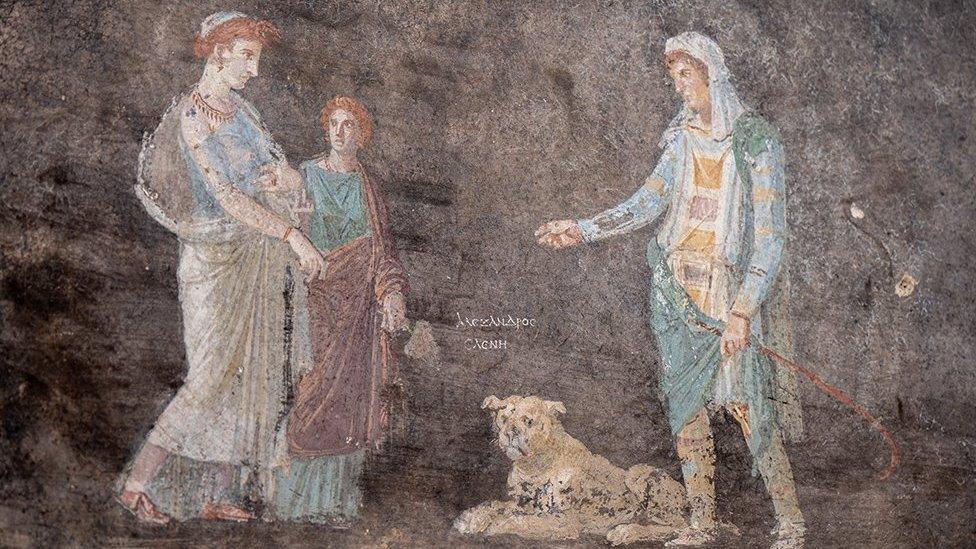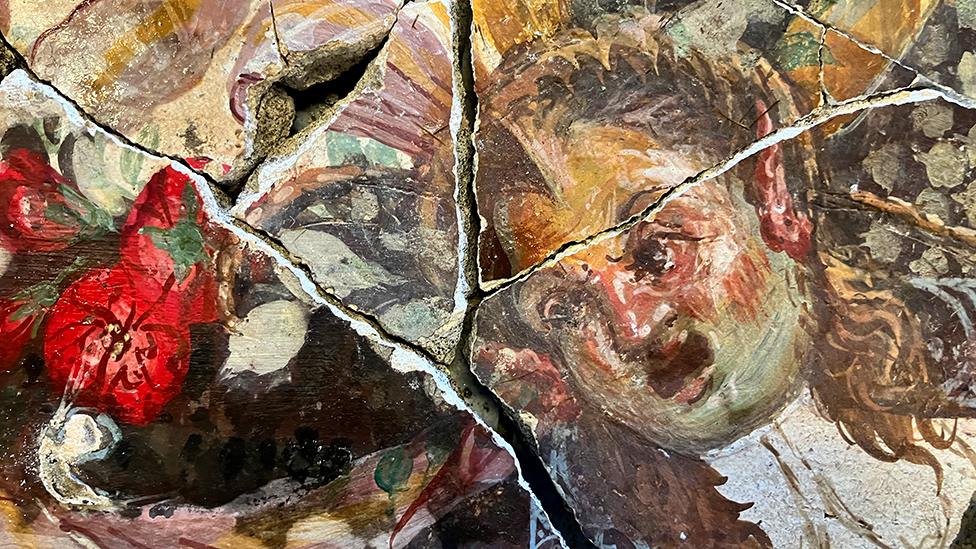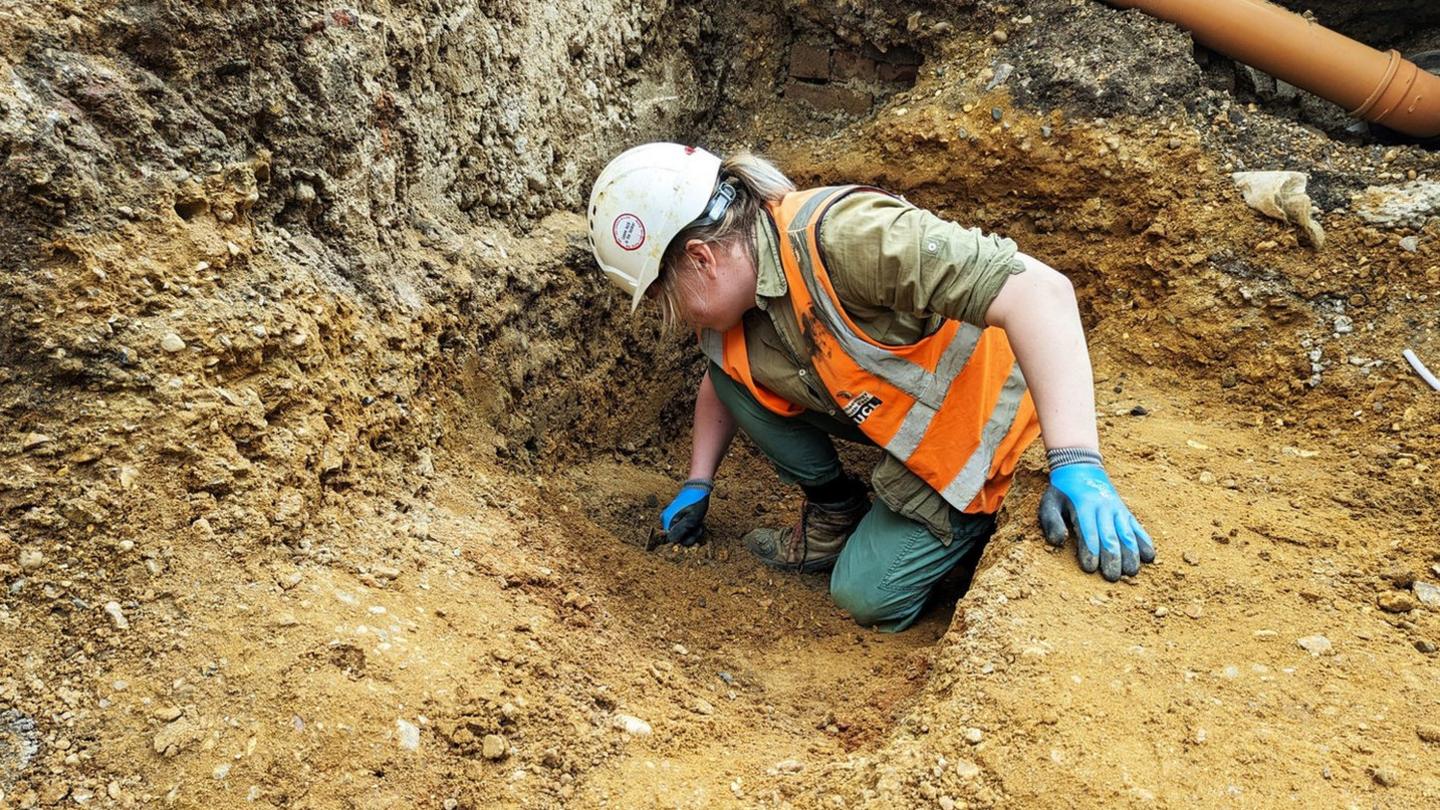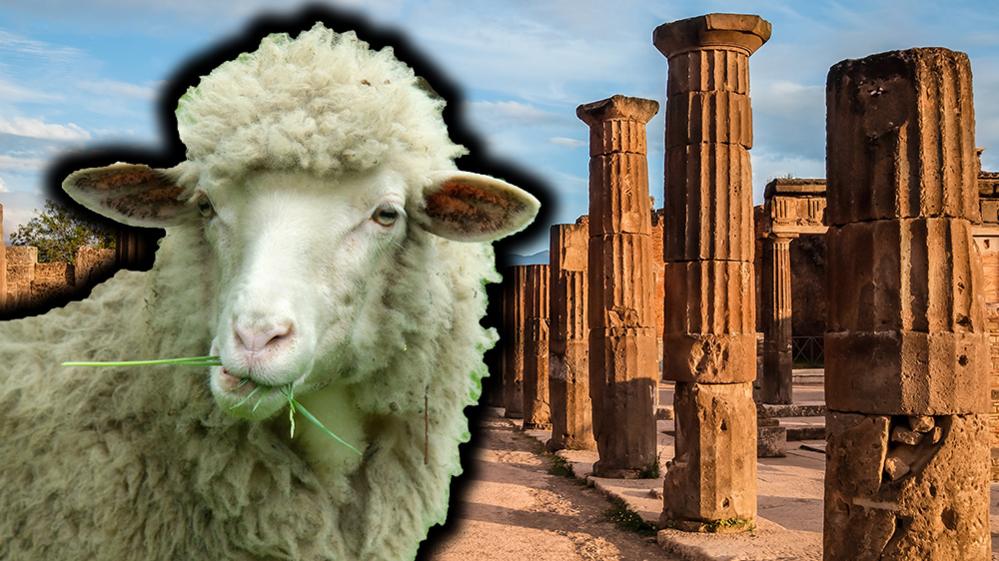Pompeii discovery: New dig finds ancient paintings in the city ruins
- Published
- comments

This newly discovered painting shows Paris and Helen of Troy, famous in Greek myths and legends
Amazing art has been discovered in the ruins of a house in Pompeii, an ancient Roman city.
These frescos - paintings done on fresh plaster so that they set to the wall - show figures from Greek myths like Helen of Troy.
Gabriel Zuctrica, director of Pompeii archaeological park, believes they would have been used by the owner and guests of the house to tell stories together in the evening.
He says that the shimmering light of the lamps would have made it look like "the paintings were almost coming to life".
Watch archaeologists uncover ancient paintings in Pompeii
Where is Pompeii?
Pompeii is an ancient city in Italy that was buried under ash after a volcano, Mount Vesuvius, erupted in AD79 - over 2,000 years ago.
The city is special in that all of its original buildings and objects were preserved underground by the eruption.
Pompeii is seen as a window into the world of the Roman Empire, and archaeologists learn lots every time they dig up more of the city.
An archaeologist is a person who looks at ancient objects and sites, like remains and ruins, to learn more about the past.
A recent dig in Pompeii has led to lots of new finds, including these paintings.
They were found on the walls of a building thought to contain a laundry, a bakery and a private home.
Archaeologists believe that the house might have belonged to a local politician, Aulus Rustius Verus, as his initials ARV were found carved into one of the walls.
That's one way to show you own the place!

This fresco would have been on the ceiling of the house, which was shattered during the volcanic eruption
What happened in Pompeii?
When Mount Vesuvius erupted, it covered the whole city in a thick layer of volcanic stones and ash.
Lumps of solid lava called pumice stones rained down on the town for 18 hours.
These layers of rock and ash have been cleared away by the new project, which is the biggest dig site in a generation.

An episode of Doctor Who saw the Doctor and companion Donna travel back to Pompeii on 'volcano day'
As well as burying Pompeii's buildings, the fall of ash and pumice completely covered the people who lived there.
The ash hardened to form a shell around the bodies of the people who died in the eruption.
When archaeologists first began uncovering the city, they poured plaster into these shells to create a cast inside.
The models of the people of Pompeii have been really important for historians to find out more about what happened when the volcano erupted.
- Published4 March 2024

- Published14 March 2023

- Published12 January 2022
